Early Survey Results Show Mycotoxin Contamination Across US
Mycotoxins are toxic secondary metabolites produced by fungi or molds that can be detrimental to animals and humans.
January 3, 2019
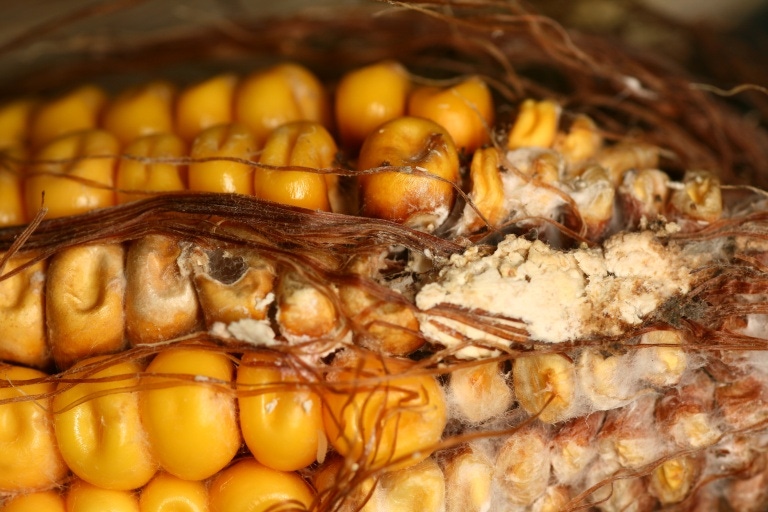
Sponsored Content
Mycotoxins are toxic secondary metabolites produced by fungi or molds that can be detrimental to animals and humans. Mycotoxins are capable of infecting almost all types of grains. If as little as 15% moisture exists in a grain storage bin, the mold existing builds and spreads; and when that grain is used to produce feed, problems can arise. As part of the BIOMIN® PROcheck mycotoxin risk management program, BIOMIN conducts annual surveys in fresh corn and corn by-products since 2012 to assess the level of mycotoxin contamination across the US.
Survey Design
While hundreds of mycotoxins commonly exist in feed ingredients or finished feed, there are six major groups that are commonly identified. These include aflatoxins, fumonisins (FUM), zearalenone (ZEN), B-Trichothecenes (B-Trich) which includes deoxynivalenol or DON (commonly known as vomitoxin), A-Trichothecenes (A-Trich) including T-2 toxin and HT-2 toxin, and finally ochratoxin-A (OTA). Many mycotoxins, such as DON are regularly detected and found in corn and wheat.
So far this harvest season, BIOMIN has collected over 232 samples from 25 states, to compile preliminary results on forecasted risk of six named mycotoxins on the livestock industry this year. Samples were tested by independent laboratories using Liquid Chromatography-Tandem Mass Spectrometry (LC-MS/MS) methods. Although majority of the samples came from the Midwest (71%), the southeastern (17%) and southern states (5%) were strongly represented as well.
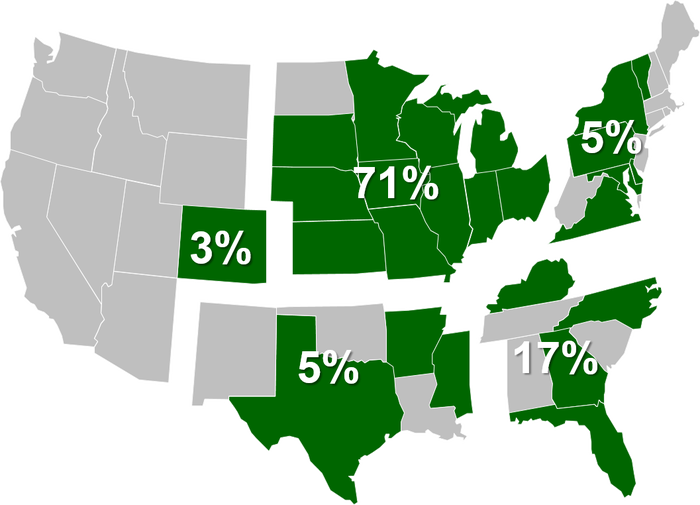
Figure 1. Percentage distribution of state-wise origin of feed samples by regions in the US
It is imperative data from any sort of mycotoxin analysis is looked not just one but from multiple perspectives to understand the prevalence of mycotoxins, significance of that prevalence and finally the impact it might have on the animal production. The measures used to present data are,
1. Occurrence
2. Co-occurrence
3. Mean of positives
4. Median of positives
5. Distribution
1. Occurrence
Survey results are indicating increased levels of occurrence of many of the mycotoxins (Fig 2). For example, ZEN has an incidence rate of 38% contamination compared to 32% in 2017. Results are also showing that FUM are up 22 percentage points from 2017’s 45% to this year’s 67%. Aflatoxins went up as well, indicating a 9% incidence rate in 2018, whereas the rate in 2017 was only 3%.
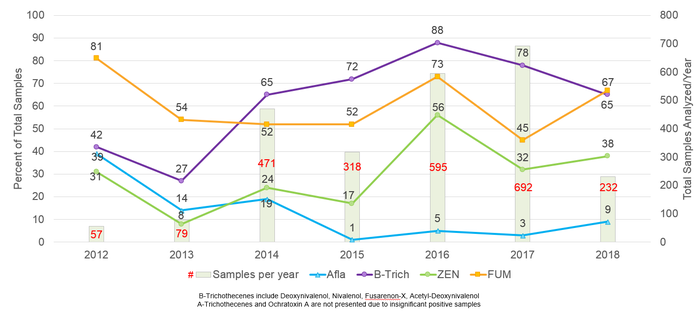 Figure 2.Occurrence of mycotoxins by major groups and the sample size per year
Figure 2.Occurrence of mycotoxins by major groups and the sample size per year
2. Co-occurrence
Co-occurrence is classified as a sample testing positive for more than 1 mycotoxin. Co-occurrence is a concern and challenge to producers since multiple mycotoxins working together intensifies their negative consequences due to their additive and or synergistic effects. As you can see in Fig 3, there has been an increase in rates from last year to this year (44% in 2017 to 60% in 2018). Another interesting data point for ZEN is that 100% samples tested positive for co-occurrence, indicating that ZEN does not occur on its own.
Comparatively, 82% of B-Trich show co-occurrence and 69% of FUM show co-occurrence. It can be concluded that it is highly likely when mycotoxins are present, B-Trich and FUM will be detected.
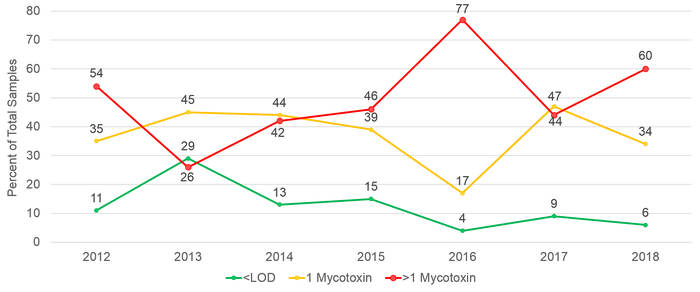
Figure 3. Co-occurrence levels of mycotoxins per year
3. Mean of positives
This measure shows the average of positive samples for each mycotoxin group (Fig 4 - average contamination levels are shown on a log scale in parts per billion (ppb)). Increases in contamination of B-Trich as well as FUM have been observed. The average B-trich levels were increased almost 200 ppb this year (927 ppb in 2017 vs. 1,123 ppb in 2018) while FUM showed an increase of over 350 ppb (2,225 ppb in 2017 to 3,560 ppb in 2018).
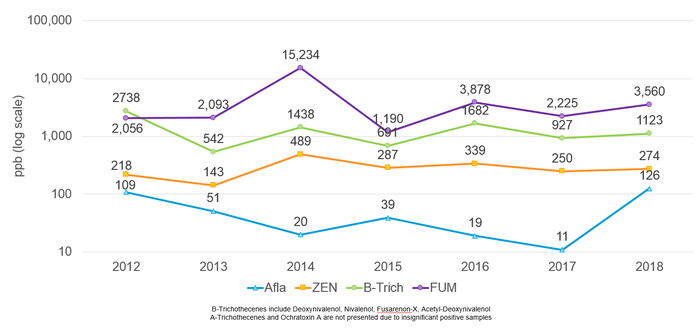
Figure 4. Mean of positive samples for major mycotoxin groups per year
4. Median of Positives
Median is the most occurring level for each mycotoxin (Fig 5 - median contamination levels are shown on a log scale in ppb). The median for B-Trich increased about 40% (486 in 2017 vs. 669 in 2018), FUM has increased over 50% (700 in 2017 vs. 1,450 in 2018) and over 400% increase for aflatoxins (6 ppb in 2017 to 27 ppb in 2018).
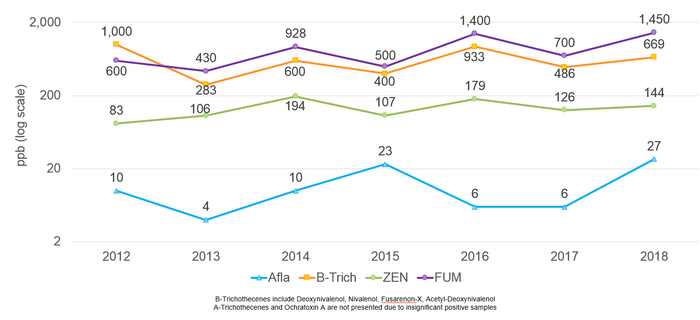
Figure 5. Median of positive samples for major mycotoxin groups per year
5. Distribution
The level of incidence of each mycotoxin varies between regions primarily due to the influence by climate and weather conditions before and during harvest.
In figures 6-8, risk levels by different mycotoxins are seen by state, exemplifying the differences between states. For the three figures, each state is labeled with the number of samples (N) that were analyzed from each state and the percent prevalence in that state. Color coding is used to show the relative risk of the state average contamination level. Please refer to the legend for contamination level color codes.
As seen in Fig 6, B-Trich so far this year is trending toward more frequently prevalent toxin in the mid to upper northeast regions, with highest contamination levels seen from Michigan, Wisconsin, and Ohio.
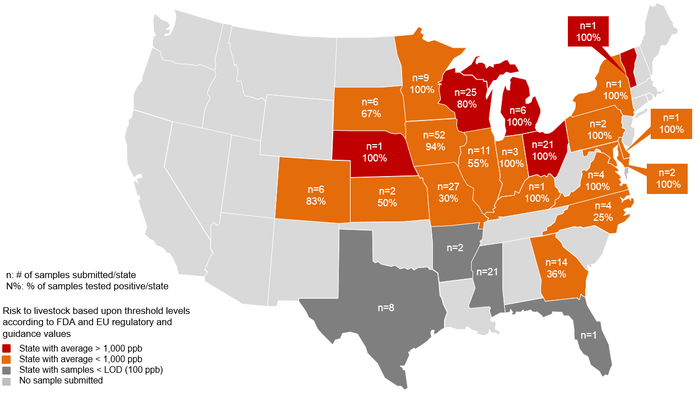
Figure 6. Distribution of B-Trichothecene (including DON) prevalence by state.
A higher risk of FUM exists in the southern states due to increased prevalence and contamination levels. We also see high risk in MO with 27 samples indicating 93% contamination. Northern Midwestern states are trending toward medium contamination levels.
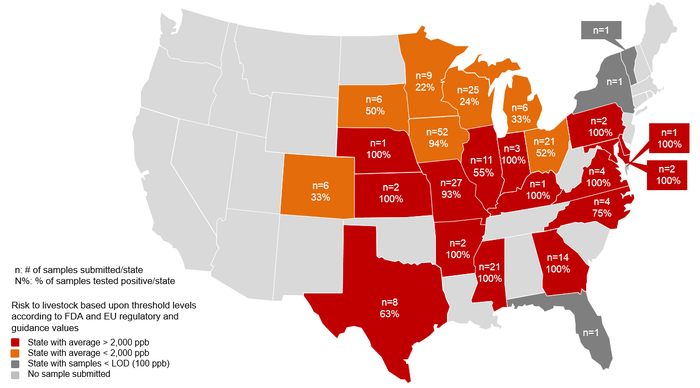
Figure 7. Distribution of Fumonisin prevalence by state.
Zearalenone contamination is highly prevalent in the Northern Midwestern states with contamination levels ranging from 50% to 80%. One notable point is, of the 52 samples tested in Iowa, 63% were contaminated with over the >100 ppb threshold.
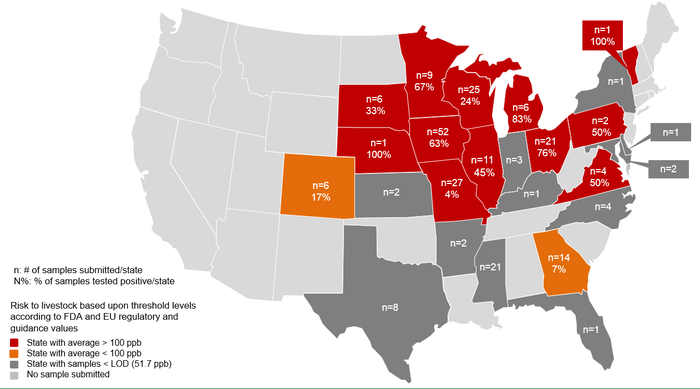
Figure 8. Distribution of Zearalenone prevalence by state
Summary
While this is an ongoing survey as more number of samples are yet to be analyzed, the overall mycotoxin risk level based on the data presented is forecasted to have medium to high risk across all species groups of food animals. Industry professionals working within poultry, swine, and ruminant alike should thoughtfully consider the trends indicated with these early results.
If you would like additional information on this data, you can click here to read our entire detailed report. In addition, you can receive a complimentary consultation through the BIOMIN® PROcheck mycotoxin risk management program. Call BIOMIN at 1-888-636-0485 or visit www.biomin.net for more information today.
About the Author(s)
You May Also Like



